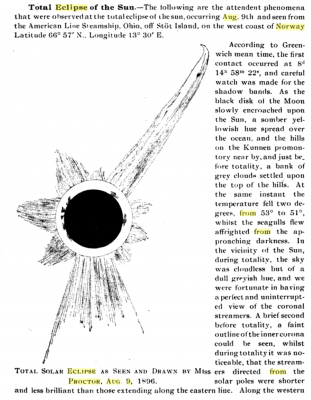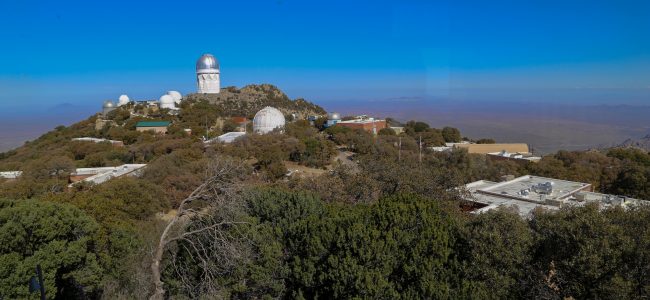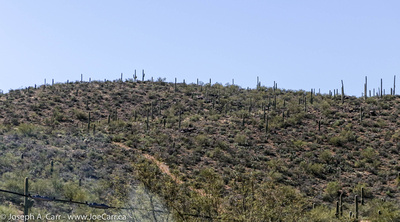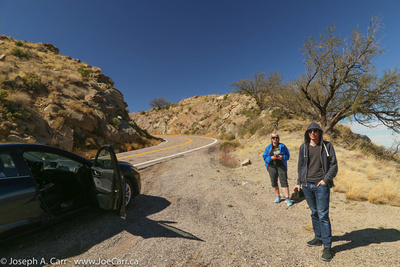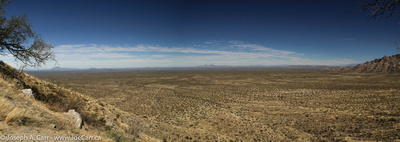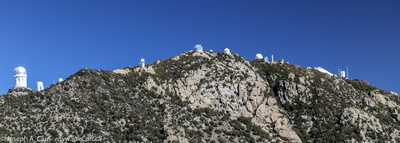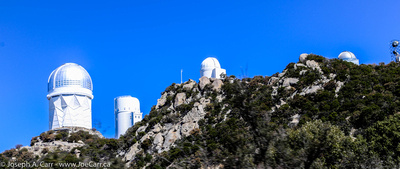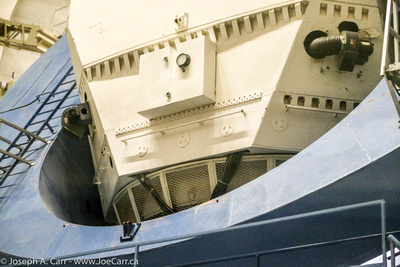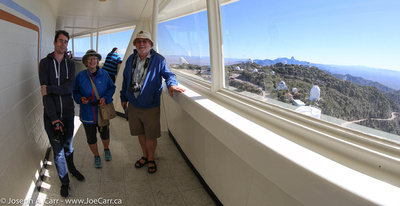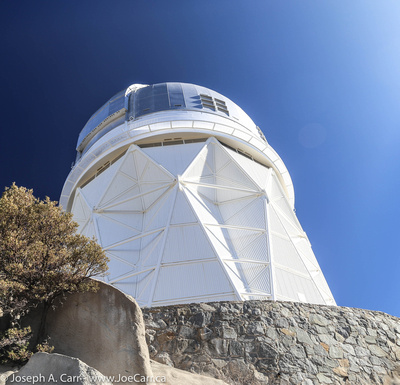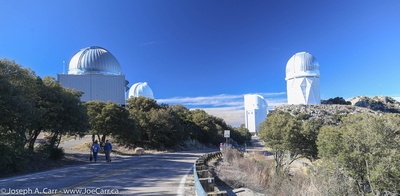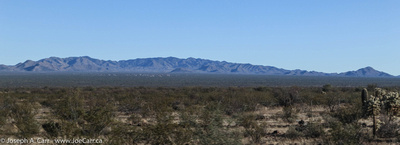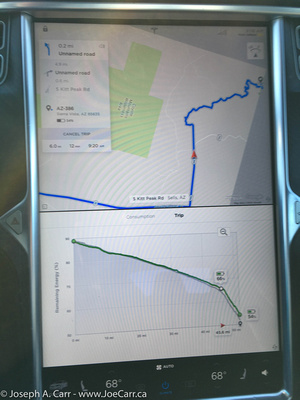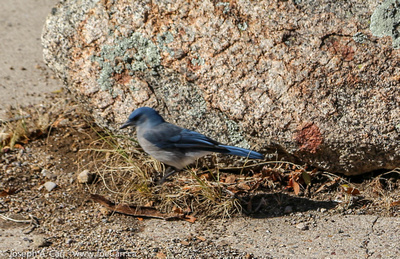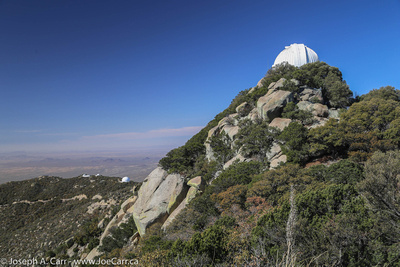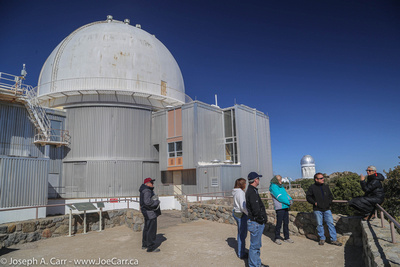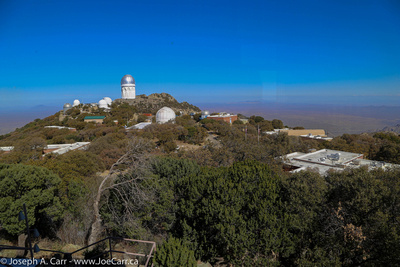June 29 to July 1, 2018 – Calgary, Alberta, Canada
Victoria to Calgary road trip 2018
The Royal Astronomical Society of Canada’s General Assembly held at the University of Calgary is probably not too interesting for people who are not members of RASC. That said, I’m going to combine the three day conference into one report on this page, just to complete my road trip travelogue.
June 28, 2018 – Arrival at the University of Calgary and the Welcome BBQ
I arrive in Calgary in the late afternoon. The RASC General Assembly (GA) registration desk is setup in the hotel lobby, so after I get settled in my room, I go downstairs to pick up my delegate’s package. I connect with a few people I know in the lobby while we wait for buses to take us to the Members’ Welcome BBQ dinner and First Nations performances at the Rothney Observatory, in the country south of Calgary. We also get to tour the observatories operating from this site.
June 29, 2018 – First day of the General Assembly
The Calgary Stampede puts on a Stampede Breakfast for delegates this morning before the GA starts, serving pancakes, eggs, bacon and sausage in the end-field zone of the home stadium of the Calgary Stampeders Canadian football club.
Dr. Robert Thirsk, astronaut and Chancellor of the University of Calgary welcomes delegates to Calgary and the University. Today is his last day as Chancellor, and our event is his last function before leaving. He tells us that being in space showed him the interconnection of the natural world with humans. He illustrates the point with many spectacular photos taken from the International Space Station, and also speculates on the question –Will we be here into the future? (100 years probably, 1,000 years probably not), and also reviews the next steps humans will make in space. He offers the opinion that a Moon base will be part of this new wave of exploration.
In the afternoon, I take the Nocturnal Preserve Tour to the Ann & Sandy Cross Conservation Area south of Calgary. This is a RASC-recognized nocturnal preserve, which supports the notion that pristine night skies are not only good for humans, but all creatures on this Earth. We all depend on darkness to restore our health while we sleep, which helps all lifeforms prosper, not just those that are active at night.
We walk part of their extensive property to appreciate the varied ecosystems found in what is now mainly the farmland of southern Alberta. Grass suitable for grazing cattle displaces the native grasses, which disrupts the ecology in the area, but remediation is possible.
After dinner, the Plaskett Medal Award Lecture is “Dicke’s Superrradiance in Astrophysics” by Dr. Fereshteh Rajabi, Postdoctoral Fellow in the Institute for Quantum Computing at the University of Waterloo. Dr. Rajabi gets into quantum mechanics and masers, and how they cause celestial objects to emit previously-unexplained bursts of intense radiation. I’m always happy to see such smart people working to understand our universe better, despite me not always fully appreciating what they are describing!
June 30, 2018 – Second day of the General Assembly
The Annual General Meeting is held in the morning, and our President highlights the robotic telescope located in the mountains of California which RASC recently acquired, and is in the process of making available online to all members. Other presentations of note today include: RASC Calgary Centre’s 60th anniversary and history; Early Women Astronomers in RASC; Aurora image processing using Hugin software; Eclipsing Binaries; NOVA Junior Program (astronomy basics); Space for all Learners (bringing astronomy to undergraduates); Telescope in “Rainy” Victoria Celebrating 100 years of looking up (the historic Plaskett telescope located near Victoria); Public Outreach at the Dominion Astrophysical Observatory (the observatory was/is a tourism draw); Minor Planets (asteroids that might hit Earth, and landing missions on small rocks in space); Once Upon an Eclipse (upcoming eclipses); First Race for the moon 1609-51 (first observations of the Moon);
After a buffet dinner with my fellow astronomers as part of the conference, I attend the public lecture: “The Golden Age of Solar System Exploration” given by Emily Lakdawalla, The Planetary Society. Emily reviews many of the more exciting recent missions to explore our solar system: Hayabusa2, New Horizons, and Cassini, to name a few. She also highlights how amateur astronomers are using data from these missions, and how they are contributing to the resulting scientific discoveries. Emily takes lots of questions from the audience.
July 1, 2018 – Final day of the General Assembly
There are more presentations this morning, concentrated on the history of RASC and astronomy: RASC in Travelling Mode (historic solar eclipse expeditions); Styles of Observing in the RASC Since 1868 (taken from the RASC archives, including telescope-making); RASC and the Space age (amateurs as both participants and spectators); The Cultural/Social Anthropology within RASC (who makes up the ranks of RASC members?); Female Participation in the RASC (RASC leads as an inclusive society in Canada).
The speaker at our banquet is Dr. Tanya Harrison “The Past and Present of Water on Mars”. She brings the missions on Mars to life, including the Curiosity Rover, which she was involved with. She also describes what “water on Mars” really means. There were lots of questions…a fascinating talk!




